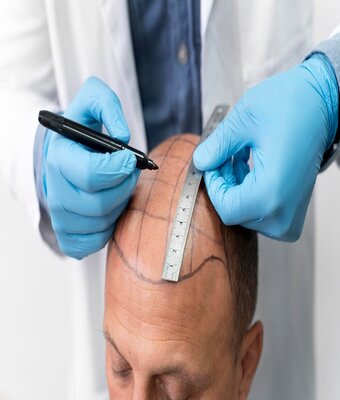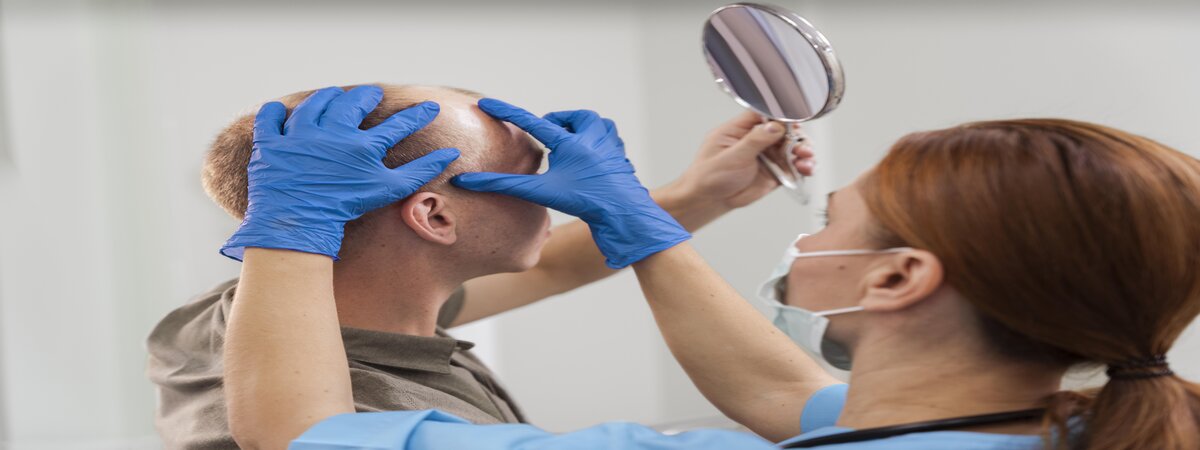
Hair Transplant Surgery: What You Need to Know
Hair transplant surgery has gained significant popularity as a solution for hair loss, offering natural-looking and long-lasting results. Whether caused by genetics, stress, or medical conditions, hair loss can impact confidence and self-esteem. Here, we delve into the details of hair transplant procedures, the different techniques available, and why consulting with top professionals, such as dermatologists in London, is crucial.
Understanding Hair Transplant Surgery
Hair transplant surgery involves moving hair follicles from a donor area (usually the back or sides of the scalp) to areas with thinning or no hair. The procedure is minimally invasive and designed to provide permanent results by using the patient’s own hair.
There are two primary techniques used in hair transplants:
Follicular Unit Transplantation (FUT):
This method involves removing a strip of skin containing hair follicles from the donor site. The follicles are then harvested and transplanted into the recipient area. FUT is ideal for covering larger bald spots and offers high graft survival rates.
Follicular Unit Extraction (FUE):
In this technique, individual hair follicles are extracted directly from the donor area using a tiny punch tool. FUE is less invasive than FUT, leaves minimal scarring, and is a great option for smaller areas of hair loss.
Who is a Candidate for Hair Transplant Surgery?
While hair transplant surgery is effective, not everyone is an ideal candidate. The best candidates are:
Individuals with stable hair loss due to genetics (e.g., male-pattern baldness).
Those with enough healthy donor hair available.
Patients in good overall health.
If you’re unsure about your eligibility, consulting experienced dermatologists can provide clarity. Reputable dermatologists in London specialize in diagnosing the root causes of hair loss and can guide you on whether surgery or alternative treatments are suitable.
The Procedure: What to Expect
Consultation and Planning:
During the consultation, your surgeon will assess your scalp, discuss your goals, and create a personalized treatment plan.
Surgery Day:
The procedure typically takes 4–8 hours, depending on the number of grafts needed.
Local anesthesia is used to minimize discomfort.
After graft placement, your scalp is cleaned and bandaged.
Recovery:
Most patients experience mild swelling and scabbing in the transplanted area.
New hair growth typically begins after 3–4 months, with full results visible in 12–18 months.
Benefits of Hair Transplant Surgery
Natural Results: Modern techniques ensure that transplanted hair blends seamlessly with your natural hairline.
Permanence: Transplanted hair is resistant to the hormones that cause hair loss, making it a lasting solution.
Boost in Confidence: Restoring your hair can positively impact your self-esteem and overall appearance.
Risks and Considerations
While generally safe, hair transplant surgery does carry some risks, including:
Infection or scarring.
Uneven hair growth.
Temporary loss of sensation in the donor or recipient areas.
Choosing a skilled surgeon and reputable clinic minimizes these risks and ensures better outcomes.
Why Choose London for Hair Transplant Surgery?
London is home to some of the world’s leading hair transplant clinics and dermatologists. The city’s experts are equipped with state-of-the-art technology and provide comprehensive care, from initial consultation to post-operative follow-up.
Whether you’re considering a hair transplant or exploring non-surgical treatments, consulting dermatologists in London ensures access to personalized advice and cutting-edge solutions tailored to your needs.
Final Thoughts
Hair transplant surgery offers a transformative solution for those struggling with hair loss. By understanding the procedure and consulting trusted professionals, you can embark on a journey to regain your confidence and achieve natural, long-lasting results.
If you’re ready to take the next step, seek guidance from experienced dermatologists or surgeons who specialize in hair restoration. Their expertise can make all the difference in your journey toward a fuller, healthier head of hair.
FAQ
How long does a hair transplant procedure take?
A hair transplant typically takes 4–8 hours, depending on the number of grafts. Larger procedures may be split into multiple sessions.
Is a hair transplant painful?
The procedure is performed under local anesthesia, making it virtually pain-free. Some discomfort may be experienced during recovery, which can be managed with medication.
Can women undergo hair transplant surgery?
Yes, women experiencing hair thinning or pattern baldness can benefit from hair transplant surgery, provided they have sufficient donor hair.
Are the results of a hair transplant immediate?
No, transplanted hair initially sheds within a few weeks. New growth begins around 3–4 months, with full results visible in 12–18 months.
Can transplanted hair fall out over time?
Transplanted hair is usually resistant to the hormones that cause hair loss and is considered permanent. However, natural hair around the transplant site may continue to thin.
Are there non-surgical alternatives to hair transplants?
Yes, options like PRP (Platelet-Rich Plasma) therapy, medications (e.g., Minoxidil or Finasteride), and laser therapy can help manage hair loss without surgery.


